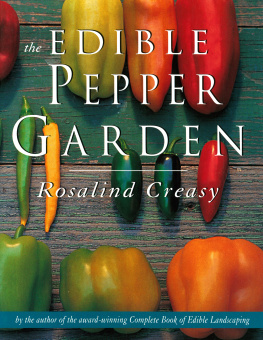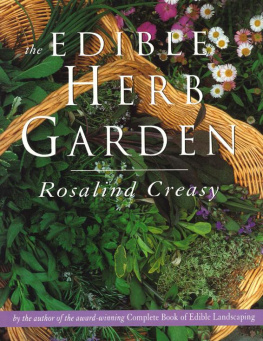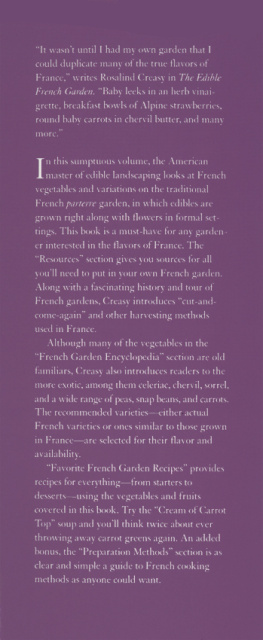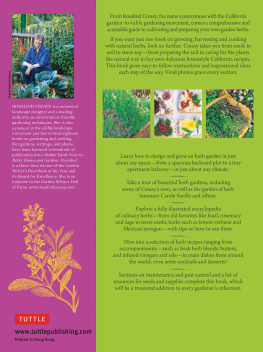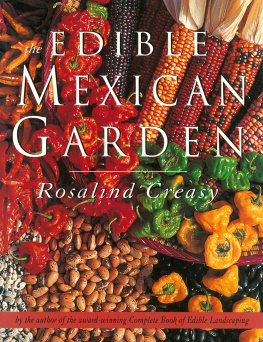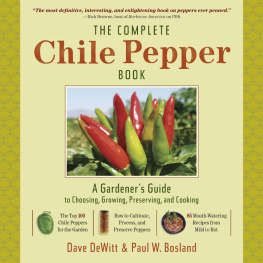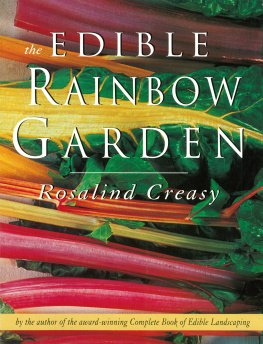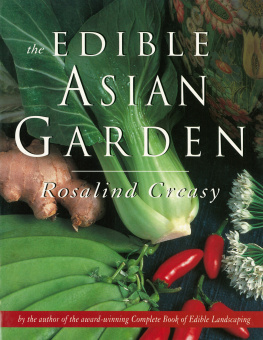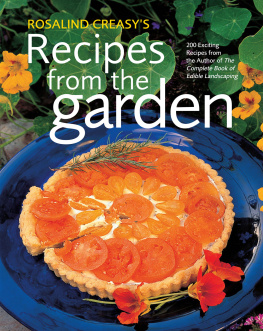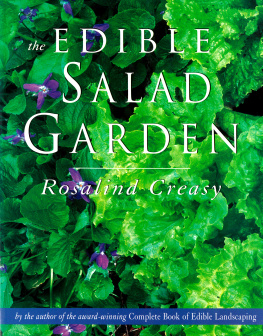acknowledgments
M y garden is the foundation for my books, photography, and recipes. For nearly twelve months of the year we toil to keep it beautiful and bountiful. Unlike most gardens, as it is a photo studio and trial plot, it must look glorious, be healthy, and produce for the kitchen all year round. To complicate the maintenance, all the beds are changed at least twice a year. Needless to say, it is a large undertaking. For two decades, a quartet of talented organic gardener/cooks have not only given it hundreds of hours of loving attention, but have also been generous with their vast knowledge of plants. Together, we have forged our concept of gardening and cooking, much of which I share with you in this series of garden cookbooks.
I wish to thank Wendy Krupnick for giving the garden such a strong foundation and Joe Queirolo for maintaining it so beautifully for many years. For the last decade, Jody Main and Duncan Minalga have helped me expand my garden horizons. No matter how complex the project, they enthusiastically rise to the occasion. In the kitchen, I am most fortunate to have Gudi Riter, a very talented cook who developed many of her skills in Germany and France. I thank her for the help she provides as we create recipes and present them in all their glory.
I thank Dayna Lane for her steady hand and editorial assistance. In addition to day-to-day compilations, she joins me in our constant search for the most effective organic pest controls, superior vegetable varieties, and the best sources for plants.
Gardeners are by nature most generous. I want to thank Carole Saville who keeps me au courant, helps document pepper varieties as I photograph, and gives input on recipes.
There are many talented seed people who help me amass variety and growing information from all over the county. They include Renee Shepherd of Renees Garden Seeds, Rose Marie Nichols McGee of Nichols Garden Nursery, Rob Johnston of Johnnys Selected Seeds, Joel Reiten at Territorial Seed Company, Craig Dremann of Redwood City Seeds, Jeff McCormack, of Southern Exposure Seed Exchange, and Peter P. Kopcinski of Berkop Seeds. I received additional support from Dr. James Baggett at Oregon State University and Dr. Paul Bosland at New Mexico State University. Thanks too to the growers: David and Karen Winsberg at Happy Quail Farms and Jeff Dawson, garden director at Kendall Jackson Winery, who allowed me to photograph their peppers and shared cultural information. Many thanks to Nona Wolfram-Koivula for locating varieties and photographs and to David Cavagnaro, W. Atlee Burpee & Company, Johnnys Selected Seeds, Park Seeds, and Territorial Seed Company for providing needed pepper images.
I would also like to thank my husband, Robert, who gives such quality technical advice and loving support, and Doug Kaufmann, who invited me into his garden to test peppers up close and personal.
Many people were instrumental in bringing this book project to fruition. They include Jane Whitfield, Linda Gunnarson, and David Humphrey, who were integral to the initial vision, Kathryn Sky-Peck for providing the style and quality of the layout, and Marcy Hawthorne for the lovely drawings. Heartfelt thanks to Eric Oey and to the entire Tuttle-Periplus staff, especially to Deane Norton, Jan Johnson, and Sonia MacNeil, for their help. Finally, I would like to thank my editor Jeanine Caunt for her strong presence, many talents, and dedication to quality.
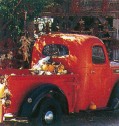
appendix A planting and maintenance
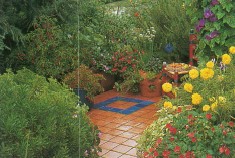
C overed in this section are crop rotation, mulching, composting, installing irrigation and watering systems, weeding, saving seeds, using floating row covers, and cold frames.
Crop Rotation
Rotating crops in an edible garden has been practiced for centuries. The object is to avoid growing members of the same family in the identical spot year after year because plants in the same family are often prone to similar diseases and pests and deplete the same nutrients. For example, peppers should not follow eggplants or tomatoes, as all are Solanaceae family plants and all are prone to fusarium wilt.
Crop rotation is also practiced to help keep the soil nutrient level up. One family, the pea family (legumes), which includes not only peas and beans but also clovers and alfalfa, adds nitrogen to the soil. In contrast, peppers deplete the soil of nitrogen, as do members of the mustard and cucumber families. Because most vegetables deplete the soil, knowledgeable gardeners not only rotate their beds with vegetables from different families, but also include an occasional cover crop of clover or alfalfa and other soil benefactors like buckwheat and vetch. After growing for a few months, these crops are turned under, providing organic matter and many nutrients. Some cover crops (like rye) are grown over the winter to control soil erosion. The seeds of all sorts of cover crops are available from farm suppliers and specialty seed companies. Ive only touched on the basics of this subject; for more information, see Shepherd Ogdens Step by Step Organic Vegetable Gardening and some of the other basic gardening texts recommended in the Bibliography.
Following is a short list of related vegetables and herbs. It is not meant to be a comprehensive list but rather to give examples of the types of plants in each family.
Apiaceae (parsley or carrot family) includes carrots, celeriac, celery, chervil, coriander (cilantro), dill, fennel, lovage, parsley, parsnips
Asteraceae (sunflower or daisy family, also called composites) includes artichokes, calendulas, celtuce, chicories, dandelions, endives, lettuces, marigolds, tarragon
Brassicaceae (mustard or cabbage family) includes arugula, broccoli, cabbages, cauliflower, collards, cresses, kale, kohlrabi, komatsuna, mizuna, mustards, radishes, turnips
Chenopodiaceae (goosefoot family) includes beets, chard, orach, spinach
Cucurbitaceae (cucumber or gourd family) includes cucumbers, gourds, melons, summer squash, winter squash, pumpkins
Fabaceae (pea family, also called legumes) includes beans, cowpeas, fava beans, lima beans, peanuts, peas, runner beans, soybeans, sugar peas
Lamiaceae (mint family) includes basil, mints, oregano, rosemary, sages, summer savory, thymes
Liliaceae (lily family) includes asparagus, chives, garlic, leeks, onions, Oriental chives, shallots
Solanaceae (nightshade family) includes eggplants, peppers, potatoes, tomatillos, tomatoes
Mulching
Among the many benefits of mulching is the moderation of soil temperatures. A thick organic mulch helps keep pepper roots from getting too hot in hot-summer regions, and a black plastic mulch warms soil in cool regions in preparation for transplanting. Mulching also reduces moisture loss, prevents erosion, controls weeds, and minimizes soil compaction. When the mulch is an organic material, it adds nutrients and organic matter to the soil as it decomposes, making heavy clay more porous and helping sandy soil retain moisture. Organic mulches include finished compost from your compost pile, grass clippings, pine needles, composted sawdust, straw, or one of the many agricultural byproducts like rice hulls or grape pomace. Layers of black and white newspaper are often used for mulching peppers in the Southwest and are particularly good at deterring weeds, conserving moisture, and reflecting heat. The sheets of newspaper are anchored by partially covering them with soil. Like many other organic mulches, newspaper can be tilled or dug in at the end of the season. Coarse, woody mulches, such as wood and bark chips or shredded bark, do not work well as mulches in vegetable gardens because they break down slowly and take nitrogen from the soil. However, they do make good mulches for pathways or other areas of a more permanent nature.

